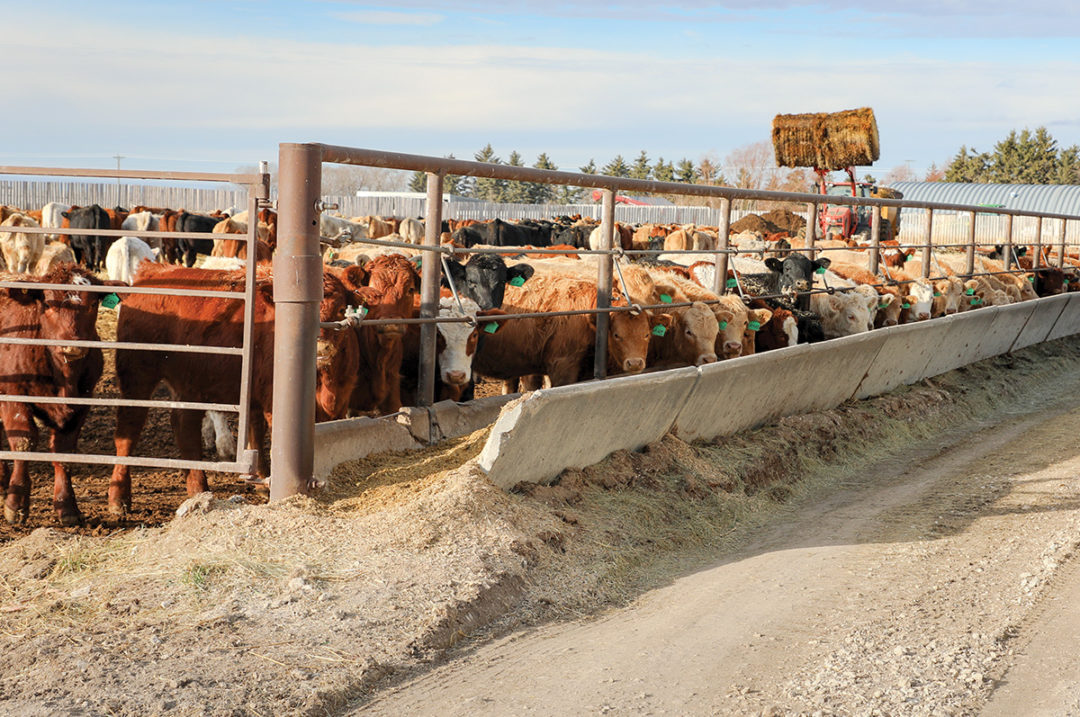As the population continues to grow, the demands of consumers and the workload on ranchers and feedlot operations also increase. It is critical now, more than ever, to save time and streamline expenses to keep your operation as efficient as possible.
Feedlots run hundreds, if not thousands, of cattle through every year, and with so many animals to manage, efficiency is key to making money. Quick equipment repair time, maintaining cattle health and optimizing feed delivery and the time it takes to work cattle all assist in making sure your operation is running smoothly, safely and as efficiently as possible.
1. Evaluate your feeding systems
Feed losses can occur during storage, mixing, transportation and can also be hindered by weather and pests. Feed costs represent one of the largest expenses on a feedlot operation; therefore reevaluating ways to reduce your feed costs and ensure waste is minimized is recommended.
One way of ensuring your feed is used as efficiently as possible is to keep it off the ground. Not only does this ensure it stays dry, but it also aids in deterring rodents, which keeps disease out of your herd. Bale feeders or concrete bunk feeders are highly recommended on feedlot operations as they protect your feed and ensure waste is reduced to a minimum.
2. Revisit feedbunk management
Feedbunk management refers to matching the amount of feed delivered to the amount of feed cattle can consume without causing digestive upsets. Poor feedbunk management often results in high fluctuations of cattle feed intake, which can lead to digestive disorders, feed waste and loss, and reduced feed efficiency. An effective way to practice bunk management is to never let your feeders go empty.
If your cattle are lined up waiting for feed, you’re not only dealing with hungry cattle but also a situation where cattle can overeat, and this can cause a risk of digestive issues, including acidosis. Conditions like this drastically heighten cattle discomfort and stress levels. Over time, this can lead to slowed weight gain, an overall poor body condition score and less profit for your feedlot operation.
3. Keep cattle stress levels low
Other than ensuring cattle are consistently fed, one surefire way to keep cattle’s stress levels low is to practice low-stress cattle-handling techniques. This is critical in optimizing your feedlot’s efficiency. Stress can cause health changes and negatively affect your cattle in multiple ways.
Cattle transportation, extreme weather periods, poor cattle-handling equipment and excessive handling techniques can all cause cattle to become stressed. It is best if cattle are handled using low-stress techniques right from day one, but on feedlots, you unfortunately cannot control how cattle are treated before they arrive at your operation when you receive cattle from multiple locations.
An effective way to keep stress levels low on your operation is to ensure cattle have enough space. Generally, 200 to 500 square feet per head is adequate pen space, depending on location and animal size. When cattle aren’t crammed into too small of a space for a long period of time, their stress levels are drastically decreased.
4. Invest in efficient equipment
Aside from practicing low-stress handling principles, it is important to make sure your cattle equipment provides a safe, low-stress experience for both cattle and operators. Consider cattle equipment that is designed to work with cattle’s natural instincts by allowing them to see light and follow the herd to optimize cattle flow and processing efficiency.
Aim to select a hydraulic squeeze chute with quiet operation, quick response controls and easily replaceable parts that any mechanically inclined hand can complete. Ensure you also invest in equipment from a company that stands behind its products and offers a warranty program and accessible customer service.
If your equipment is down, the last thing you want to deal with is waiting on parts for days or even weeks, or for a technician to arrive only to tell you additional parts need to be ordered, costing you more time and money.
By taking steps to consider and reevaluate the equipment you’re using, your feed systems and the conditions your cattle are in and their stress levels, you’ll set yourself and your operation up for continued success and achieve optimal efficiency.











